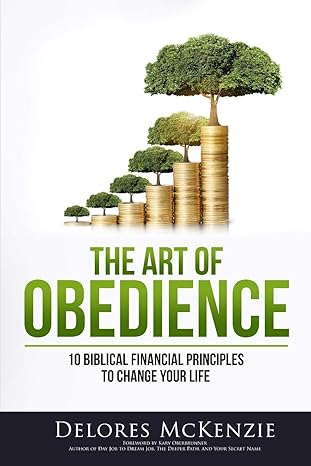Answered step by step
Verified Expert Solution
Question
1 Approved Answer
[The following information applies to the questions displayed below.] Trini Company set the following standard costs per unit for its single product. Direct materials (30
[The following information applies to the questions displayed below.] Trini Company set the following standard costs per unit for its single product. Direct materials (30 pounds @$4 per pound) Direct labor (5 hours @ $14 per hour) Variable overhead (5 hours $8 per hour) Fixed overhead (5 hours @ $10 per hour) $ 120.00 70.00 40.00 50.00 $280.00 Standard cost per unit Overhead is applied using direct labor hours. The standard overhead rate is based on a predicted activity level of 80% of the company's capacity of 60,000 units per quarter. The following additional information is available. Production (in units) Standard direct labor hours (5 DLH/unit) Budgeted overhead (flexible budget) Fixed overhead Variable overhead. 70% 42,000 units 210,000 hours. $ 2,400,000 $ 1,680,000 Operating Levels: 80% 48,000 units 240,000 hours.. $ 2,400,000 $ 1,920,000 90% 54,000 units 270,000 hours. $ 2,400,000 $ 2,160,000 During the current quarter, the company operated at 90% of capacity and produced 54,000 units; actual direct labor totaled 265,000 hours. Units produced were assigned the following standard costs. Direct materials (1,620,000 pounds @ $4 per pound) Direct labor (270,000 hours @ $14 per hour) Overhead (270,000 hours @ $18 per hour) Standard (budgeted) cost Actual costs incurred during the current quarter follow. $ 6,480,000 3,780,000 4,860,000 $ 15,120,000 Actual costs incurred during the current quarter follow $4.10 per pound) $13.75 per hour) Direct materials (1,615,000 pounds Direct labor (255,000 hours Fixed overhead Variable overhead Actual cost $ 15,120,000 $6,621,500 3,643,750 2,350,000 2,200,000 $14,815,250 Problem 21-4A (Static) Computing materials, labor, and overhead variances LO P3, P4 Required: 1. Compute the direct materials variance, including its price and quantity variances 2. Compute the direct labor variance, including its rate and efficiency variances. 3. Compute the overhead controllable and volume variances. Complete this question by entering your answers in the tabs below. Reg 1 Reg 2 Reg 3 Controllable Variance Req 3 Volume Variance Compute the direct materials variance, including its price and quantity variances. (Indicate the effect of each variance by selecting favorable, unfavorable, or no variance, Round "C decimal places.) Actual Cost Actual quantity Actual price Actual quantity Standard price Stander Cust equired information Complete this question by entering your answers in the tabs below. Part 1 of 3 Req 1 Reg 21 Reg 3 Controllable Variance Reg 3 Volume Variance D poin Compute the direct materials variance, including its price and quantity variances. (Indicate the effect of each variance by selecting favorable, unfavorable, or no variance. Hound "Co decimal places.) Actual Cost efloo Actual quantity Actual price Pent A S Actual quantity $ Standard price S 0 Req2> Standard Cust Complete this question by entering your answers in the tabs below. Req 1 Rudd 2 Req3 Controllable Variance Req 3 Volume Variance Compute the direct labor variance, including its rate and efficiency variances. (Indicate the effect of each variance by selecting favorable, unfavorable, or no variance Round "Cost pe to two decimal places.) Actual Cost $ 0 $ $ 0 Prax 1 2 of 2 Next > Standard Cost 18.36 PM Complete this question by en Assessment Tool iFrames in the tabs below. Req 3 Req 1 Req 21 Controllable Req 3 Volume Variance Variance Compute the overhead controllable variance. (Indicate the effect of the variance by selecting favorable, unfavorable, or no variance.) Controllable Variance Actual total overhead. Budgeted total overhead Controllable variance < Req 2 Req 3 Volume Variance > of 2 .. Complete this question by entering your answers in the tabs below. Req 1 Req 2 Req 3 Controllable Variance Req 3 Volume Valance Compute the overhead volume variances. (Indicate the effect of the variance by selecting favorable, unfavorable, or no variance.) Volume variance ces Budgeted total overhead Standard overhead applied Volume variance < Req 3 Controllable Variance Req Volume Variance>
Step by Step Solution
There are 3 Steps involved in it
Step: 1

Get Instant Access to Expert-Tailored Solutions
See step-by-step solutions with expert insights and AI powered tools for academic success
Step: 2

Step: 3

Ace Your Homework with AI
Get the answers you need in no time with our AI-driven, step-by-step assistance
Get Started


